Building back better: reducing disaster risk
One week on from the devastating Nepal earthquake, risk experts say the dire situation could have been much worse if efforts to strengthen the country’s infrastructure against natural disaster had not already been put in place.
An estimated 8 million people were caught up in the disaster, which hit one of the world’s poorest and most disaster-prone countries. Hundreds of thousands of homes have been damaged or destroyed and many are in desperate need of food, water, shelter and medical care.
Nepal is prone to earthquakes and has historically experienced a quake every 60 years. It is at high risk of floods, landslides, drought and avalanches, with a rapidly increasing urban population and poor economic growth.
Given the scale of hazards, the government of Nepal and international humanitarian agencies have taken some steps to reduce the risks. It’s that forward planning and preparation that may have saved thousands of lives.
Tom Newby of Care International UK is in Kathmandu working on providing temporary shelter for those affected: “The situation is dreadful but it’s not nearly as bad as it could have been. In the city, the infrastructure isn’t particularly badly affected. Many of the new buildings are made of concrete and have withstood the tremor. The main roads in and out of the city are generally functioning well.
“The government and aid agencies have been working to improve the critical infrastructure of the country. Although many of the local hospitals are struggling to cope, they have, nevertheless, survived the quake and are operating. That’s probably because they underwent a major retrofit to make them earthquake resistant several years ago.”
The majority of buildings that collapsed were old and made of a wooden frame in-filled with masonry, which had become weakened through time. Many ancient temples and heritage sites suffered severe damage.
The Nepal Risk Reduction Consortium (NRRC) has been coordinating efforts to reduced disaster vulnerability, working with humanitarian and development partners. In 2013, annual spending to disaster risk reduction had increased five-fold in over a decade to £26 million, much directed into several key areas:
- retrofitting more than 200 schools and hospitals to make them more resistant to earthquakes using polypropylene packaging straps to form a mesh used to encase structural walls
- creating local disaster preparedness and response plans
- setting up scores of evacuation sites for people displaced by earthquakes.
As well as strengthening infrastructure, development agencies and the government have also been helping communities – the first responders to this crisis – cope better in times of adversity, particularly in rural and isolated areas.
Oenone Chadburn, Tearfund’s Head of Support said: “Since 2009, we’ve been working in isolated villages in Nepal on multi-hazard risk reduction, setting up self-help groups, mostly made up of women. They have saving schemes in place, which they can draw on in times of crisis. We also helped them to diversify their livelihoods and gave them the skills they need to adapt to shocks. Just four months ago, we trained a rural community on first aid techniques, which will have been extremely beneficial to them after the quake.”
Such programmes have helped the country improve its preparedness, but have also exposed some of the challenges caused by unplanned urbanisation, a failure to respect building codes and limited resources.
But risk experts are hopeful that after people’s immediate needs are met and the process of rebuilding begins, disaster risk reduction will be central to every development agency’s plan. The DEC has today made the decision to extend its aid response to three years to allow its member agencies to meet longer-term needs and help rebuild lives and livelihoods which will withstand future disasters.
Dom Hunt, Concern Worldwide’s disaster risk expert in Kathmandu said:
“It is desperately important to take this opportunity to invest in reducing risk. An important concept in disaster risk reduction is to build back better. We will be using this concept in all of our relief and recovery operations in Nepal – ensuring that assets are replaced, so that people don’t fall into extreme poverty. By doing that, we hope that the livelihoods of those affected will not only continue, but flourish.”
DEC Chief Executive Saleh Saeed said: “As part of their response, our member agencies will ensure that disaster risk strategies are incorporated into their planning, ensuring that we help communities build back better.”
[Ends]
DEC member agency disaster experts are available for interview. Please contact the DEC media office on 020 7387 0200 or 07930 999 014 for more information.
Notes:
- 2013 Review of NRRC (reported committed budget): School safety: $10.5million; hospitals retrofitted: $2million; community-based DRR: $29million.
- Annual spending on disaster risk reduction grew from almost US$8 million in ten years to around US$40 million in 2013.
- The DEC brings 13 leading UK aid charities together in times of crisis: ActionAid UK, Age International, British Red Cross, CAFOD, Care International, Christian Aid, Concern Worldwide, Islamic Relief, Oxfam, Plan UK, Save the Children, Tearfund and World Vision; all collectively raising money to reach those in need quickly.
- All DEC agencies will support the appeal and are responding in Nepal.
- To make a postal donation make cheques payable to ‘DEC’ and mail to ‘PO Box 999, London, EC3A 3AA’.
- Donations can be made at any high street bank and at post office counters. To donate £5 by text, send the word SUPPORT to 70000. The full £5 will go to the DEC Nepal Earthquake Appeal. Donors must be 16 years or over and have bill payers permission. Texts are free and donations will be added to the bill.

